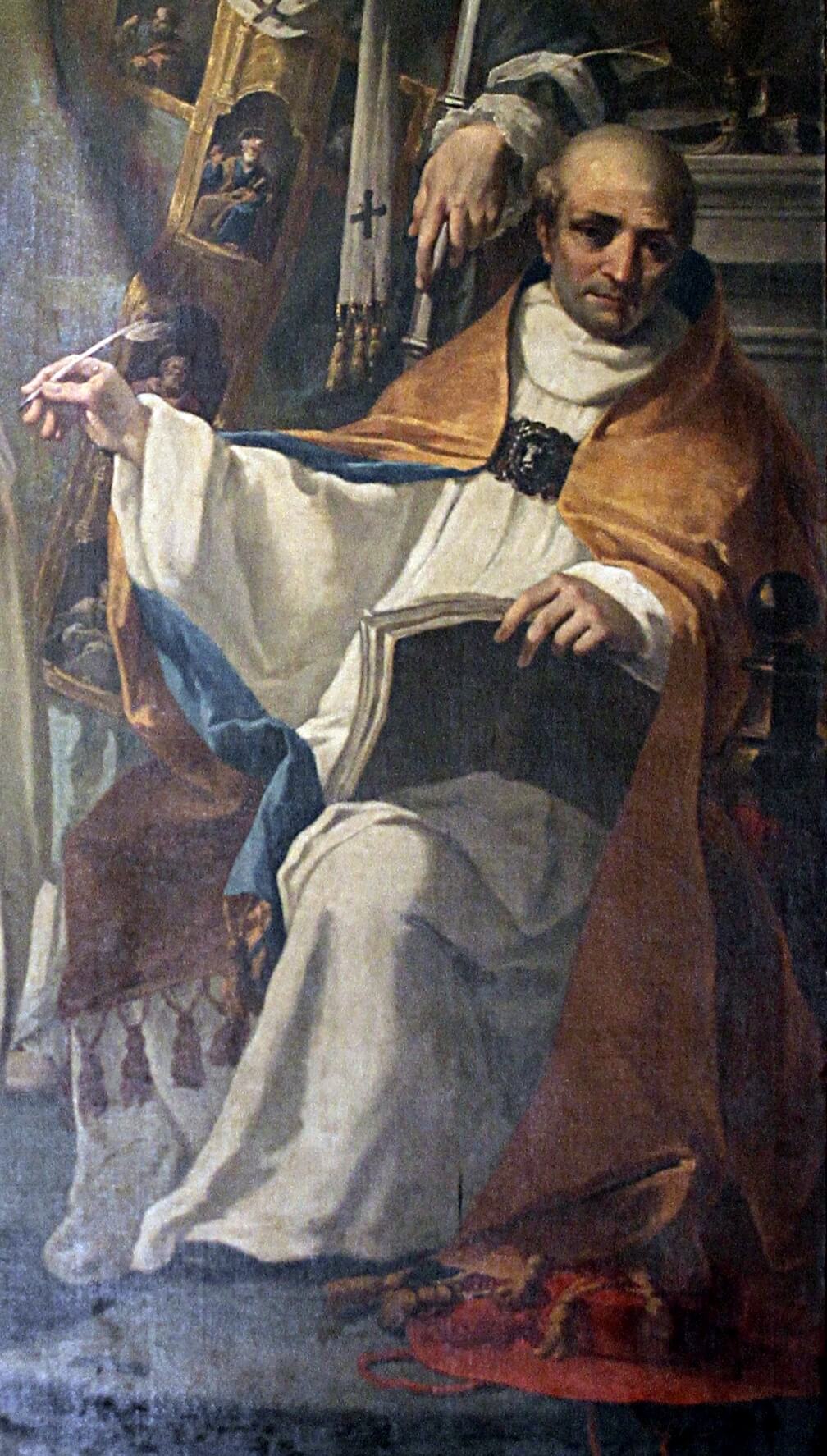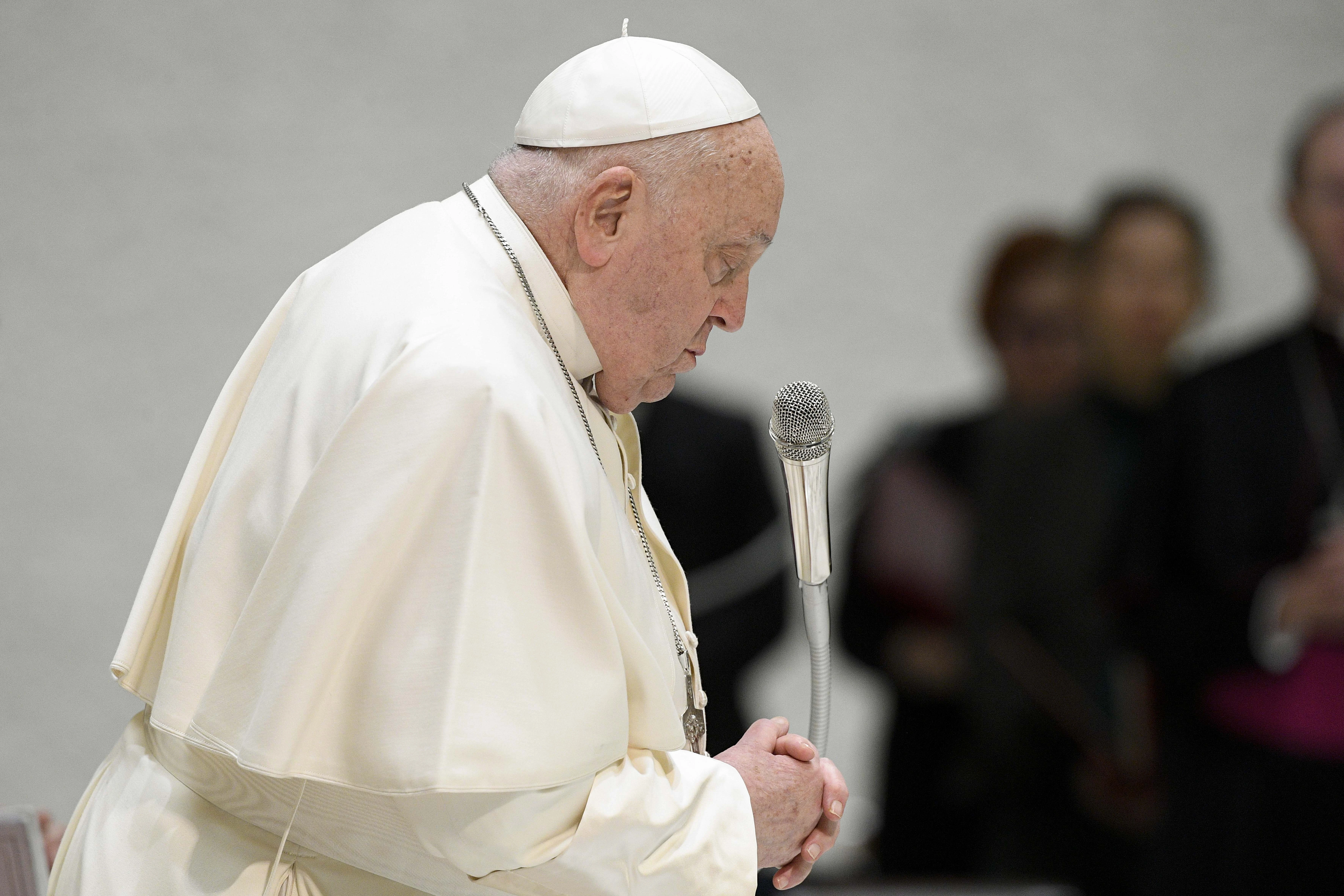The Saint Who Faced the First Pornocracy
Editor’s note: OnePeterFive is beginning a series in which we will discuss the lives and teachings of the Doctors of the Church, with the articles released on the feast day of each saint. Each of these saints help us with […] The post The Saint Who Faced the First Pornocracy appeared first on OnePeterFive.


Editor’s note: OnePeterFive is beginning a series in which we will discuss the lives and teachings of the Doctors of the Church, with the articles released on the feast day of each saint. Each of these saints help us with our current crisis by reminding us that God raises up the saints to deal with times of darkness and works through them to restore the Church, as we will see today. As such they become our powerful interceressors in heaven, that God may raise up new saints and doctors in our day to fulfill His promise to the Church: “You are Peter and upon this rock I will build my Church, and the gates of hell will not prevail against it.” God raised up today’s saint to face the struggle concerning the First Pornocracy, and he will do the same with our own Third Pornocracy.
“[I]t is a great grace that the Lord should have raised up in the life of the Church a figure as exuberant, rich and complex as St. Peter Damian. Moreover, it is rare to find theological works and spirituality as keen and vibrant as those of the Hermitage at Fonte Avellana… He spent himself, with lucid consistency and great severity, for the reform of the Church of his time. He gave all his spiritual and physical energies to Christ and to the Church, but always remained, as he liked to describe himself, Petrus ultimus monachorum servus, Peter, the lowliest servant of the monks.'” (General Audience, 9 Sept., 2009, Pope Benedict XVI)
St. Peter Damian
Born: 1007
Died: 1072
Proclaimed a Doctor of the Church: 1828 by Pope Leo XII
Feast Day (pre-1962 calendar): February 23rd
Peter was born just after the turn of the millennium near Ravenna, Italy. He was the youngest of many siblings and lost his parents at an early age, which meant that one of his older brothers became his chief caretaker. This brother treated him poorly and worked him brutally hard for how young Peter was. Eventually a different brother, who was a priest living locally, rescued Peter from this situation and sent him off to receive a formal education. Beyond these few facts, which are pieced together from letters that this great saint wrote to a friend later in life, not much is known of his early life.

We do know that he was remarkably intellectually gifted and excelled at his studies, becoming a well renowned teacher by the age of twenty-five. Additionally, he possessed an innate piety that was visible from a very young age and manifested itself in rigorous and disciplined fasting and penances, the likes of which were recorded by friends and colleagues throughout his entire life. After a few years of teaching, he entered a hermitage and quickly began the work of reforming and establishing monasteries in the surrounding areas.
Seeing his remarkable ability to reform clerical practices, Pope St. Leo IX quickly set his sights on entrusting Peter to help with a much larger reform of the entire Church. Pope Leo’s reign from 1049-1054 came less than 100 years after the height of the first Pornocracy and the most debaucherous and skullduggerous pope in history, John XII.
Timothy Flanders aptly describes this time in the Church – which immediately preceded the life of Peter Damian – as follows: “…the Roman see fell into its first sustained period of corruption. It was a period later known as the Pornocracy, due to the unspeakable acts of sacrilege, profanation, and debauchery committed by the popes and their allies in this time. This hit rock bottom with John XII whom St. Robert Bellarmine called ‘practically the worst of all pontiffs.’”
St. Peter graciously accepted Pope Leo’s tasking and set to work quickly and diligently. He immediately wrote extensive works on simony as well as clerical celibacy and sexual abuse within the Church. In fact, he would unearth so much corruption and deviance amongst the clergy that it would make the very Pope who had tasked him with this job uncomfortable with the publication of his findings.
The effort to reform the Church from the top down was greatly rewarded by the next pope, Stephen IX, when he elevated Peter to the office of Cardinal, where he would have great influence over the inner workings of the Church hierarchy. From his early days in the universities up through his elevation to Cardinal, Peter was always rewarded and recognized for his incredible contributions to the Church. Yet those who knew him and worked for him remarked that his humility and piety never suffered from such career advancements.
St. Peter’s influence in Rome went beyond his writings and clerical reforms at the behest of multiple popes, as he, cardinal Humbert of Silva Candida, and Cardinal Hildebrand (who would become Pope St. Gregory VII) worked together to organize the college of cardinals and give proper structure to Church functions such as papal elections. Much of our modern system of canon law and ecclesiastical organization can be credited to these men, most especially to St. Peter Damian.
Beyond the basic biography that was just provided, the best way to get to know a Doctor of the Church is through his writing and preaching. To this day we have access to many letters, sermons, and books written by St. Peter, including several biographies of great saints that came before him. The aforementioned work on clerical celibacy and sexual abuse, titled Liber Gomorrhianus (“Book of Gomorrah”), is perhaps his most famous work, and the most relevant for Catholics living today. Though we have had many sexual scandals in the Church, it is not hard to argue that the modern sex abuse crisis is one of the most devastating, pernicious, far-reaching scandals in Church history.
Many Catholics today would be rather shocked at St. Peter’s blunt and eviscerating tone when discussing sodomy, pederasty, and all other forms of sexual sins amongst clergy. Perhaps a certain level of shock at the way a prince and doctor of the Church discussed these matters would be healthy for us today who, like it or not, do not see homosexual acts and sexual abuse with the same disdain and severity with which our greatest saints viewed them. Sodomy is, after all, one of only four sins that cries to heaven for vengeance.
For example, St. Peter writes “For God’s sake, why do you damnable sodomites pursue the heights of ecclesiastical dignity with such fiery ambition?” and, addressing those abusive clerics, “Tell us, you unmanly and effeminate man, what do you seek in another male that you do not find in yourself?”[1] You can almost hear him shouting this with righteous anger at so many of our bishops and cardinals today who simply refuse to stand up against the heinous atrocities that are being committed within our own churches.
He writes of sodomy that
Without fail, it brings death to the body and destruction to the soul. It pollutes the flesh, extinguishes the light of the mind, expels the Holy Spirit from the temple of the human heart, and gives entrance to the devil, the stimulator of lust. It leads to error, totally removes truth from the deluded mind… It opens up hell and closes the gates of paradise… It is this vice that violates temperance, slays modesty, strangles chastity, and slaughters virginity… It defiles all things, sullies all things, pollutes all things.
Imagine a cardinal saying such things publicly in 2022. (Would he be called a “mean Trad”?) Please God, send us another St. Peter Damian!
Not only were his verbal and written condemnations of the sin harsh and succinct, he went so far as to recommend to the pope that men found guilty of such sexual sin should be severely punished to the full extent of ecclesial law and completely stripped of their office and faculties. St. Peter had no patience for a man who would so grotesquely defile the most dignified office of the priesthood. He called upon the highest leadership in the Church to address sodomy and pederasty for what they are: abominations before God. He demanded accountability and swift and severe punishment for those involved in these carnal sins.
Much like the reform of the 11th century Church, a modern reform will need great saints to courageously rise up and take action against the decimation being brought upon Christ’s Bride. The most recent and well-renowned translation of Liber Gomorrhianus was written in 2015 by Matthew Hoffman, and it contains a comparison of the sexual abuse crisis of the 11th century with what we face today:
The big difference between the two periods, aside from the vastly different social context, is found in the causes of the respective crises. In the eleventh century the cause was the weakening of the papacy and of the hierarchical structure of the Church by the political chaos and breakdown of authority during the preceding two centuries. The popes began to recover their authority in the middle of the eleventh century and boldly asserted that authority against a deeply entrenched opposition, and eventually they won. We also face a crisis of authority today, but the cause is in this case an interior one, deriving from the unwillingness of many prelates to exercise their authority in defense of the faith and morals of the Church. The Catholic Church today does not suffer so much from the meddling of secular powers but from an internal crisis marked by an ambivalence about the very identity and mission of the Church itself. In that sense, it would seem even more grave than the crisis of the eleventh century. (emphasis mine)
As with every article in this series, I want to encourage you to celebrate the feast day of this great saint and to spend some time getting to know him through his writing. I would like to end not with the words of Peter Damian himself, but with a rather powerful quote from Pope St. Leo IX that he wrote in response to St. Peter’s Book of Gomorrah:
Stirred up by holy rage, you wrote of such [i.e., sodomitical] clerics according to your judgment; it is appropriate … that we intervene with our apostolic authority so that we might dispel scrupulous uncertainty from the reader, and so that it may be known with certitude by all that everything that this little book contains has been pleasing to our judgment, being as opposed to diabolical fire as is water. … For he who does not attack a vice, but rather coddles it, is justly judged guilty of the death together with those who die by that vice.
Through the intercession of Pope St. Leo IX and St. Peter Damian, Doctor of the Church, may our clergy attack vice, not coddle it, and may they begin to root out the corruption and sexual deviancy within our own walls with the same courage and ferocity of our Lord with whips in the Temple.
St. Peter Damian, pray for us!
Image by HeonCheol LEE from Pixabay
[1] All quotes are taken from the translation of Gomorrah by Owen J. Blum, O.F.M., “Peter Damian, Letters 31-60” (part of the Fathers of the Church – Medieval Continuation series). Catholic University of America Press, Washington, D.C., 1990.
The post The Saint Who Faced the First Pornocracy appeared first on OnePeterFive.














